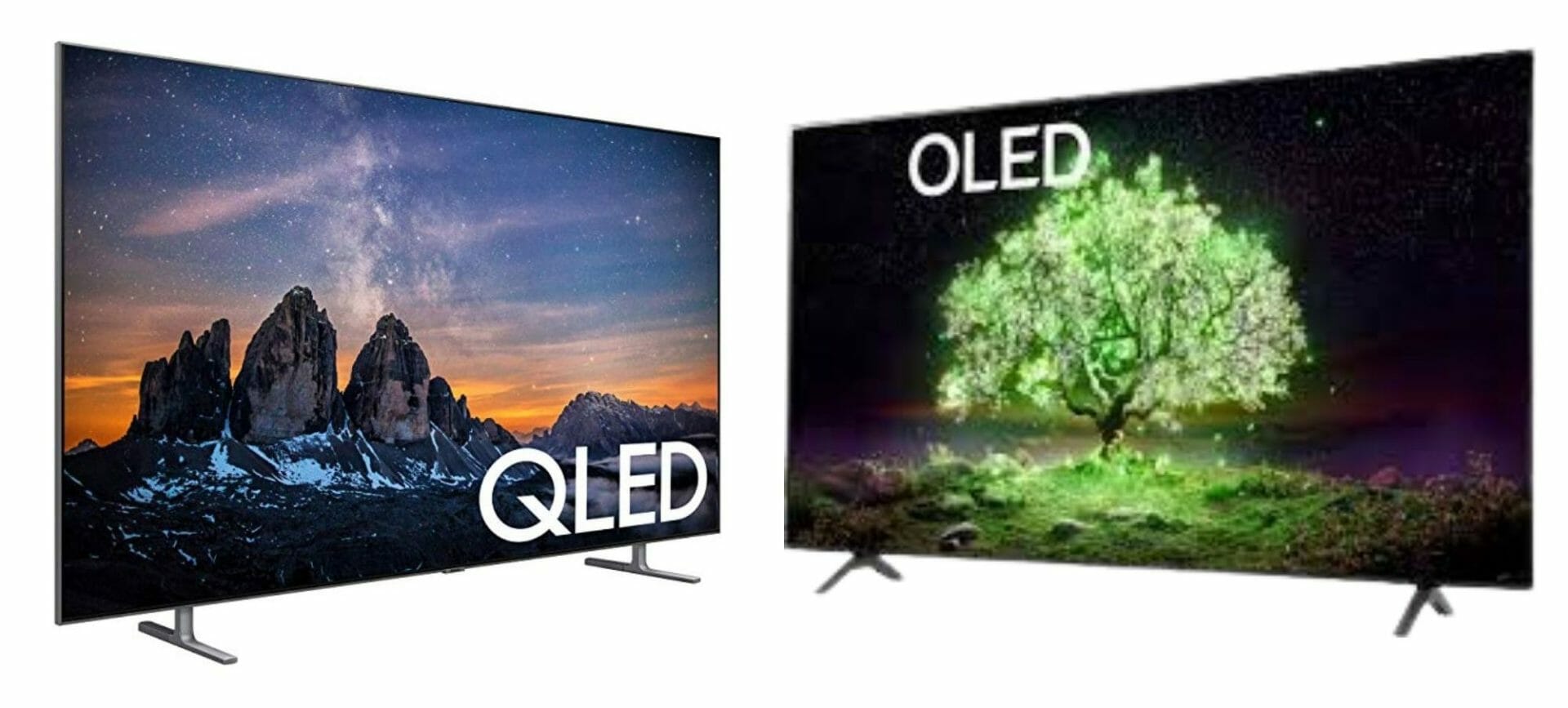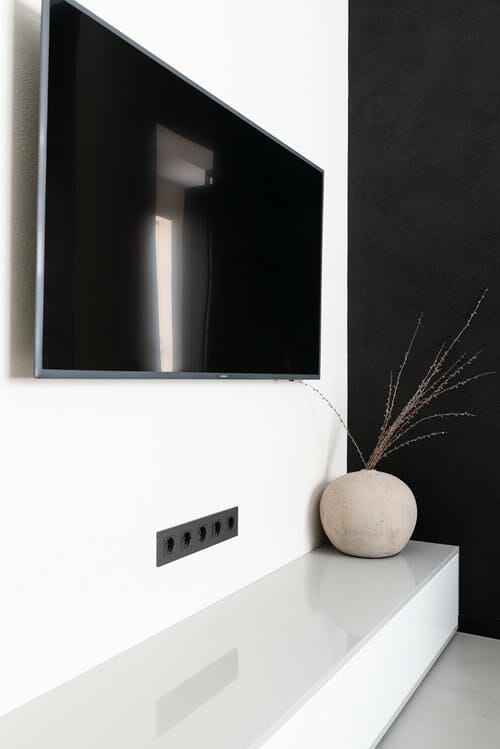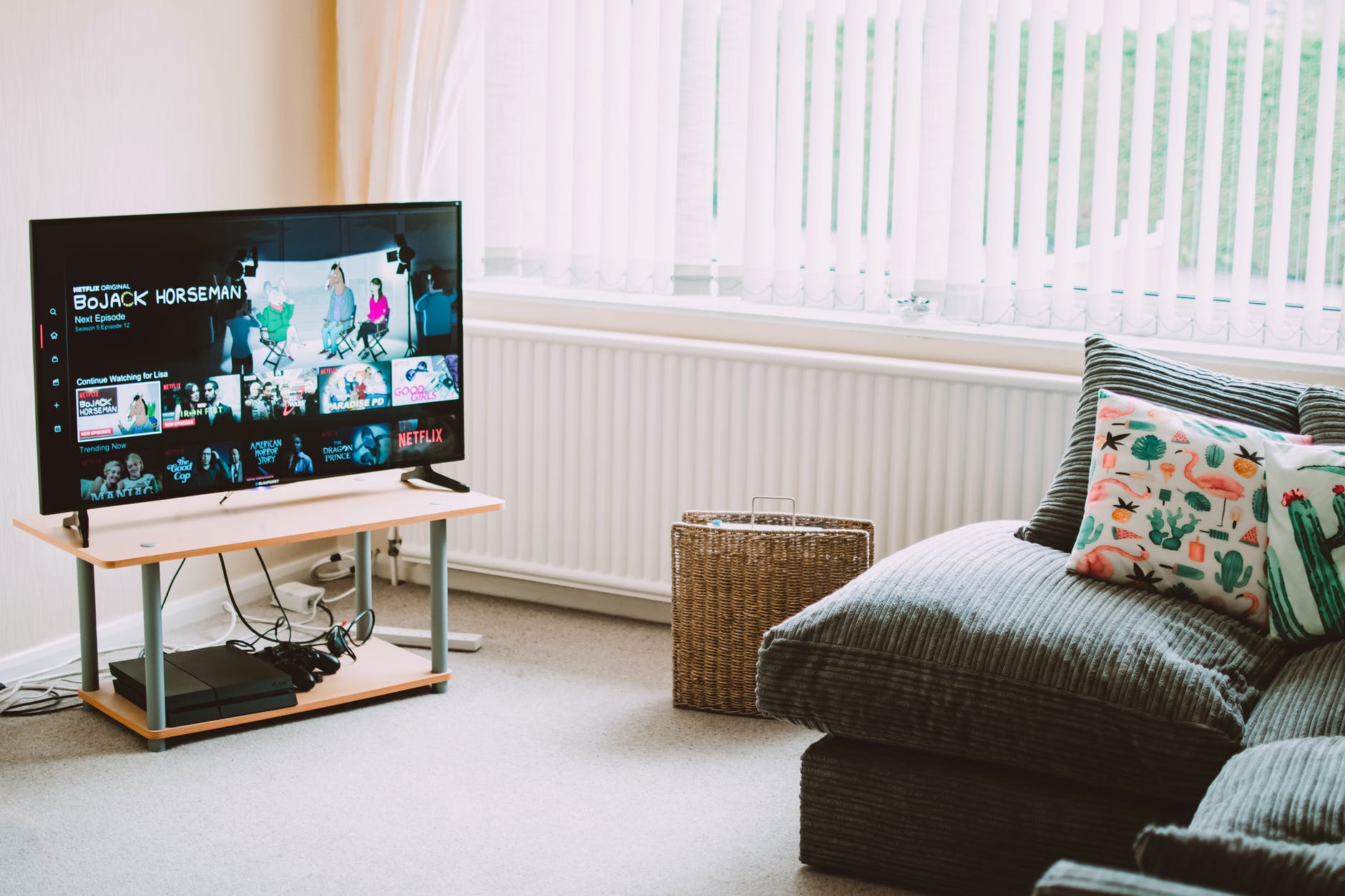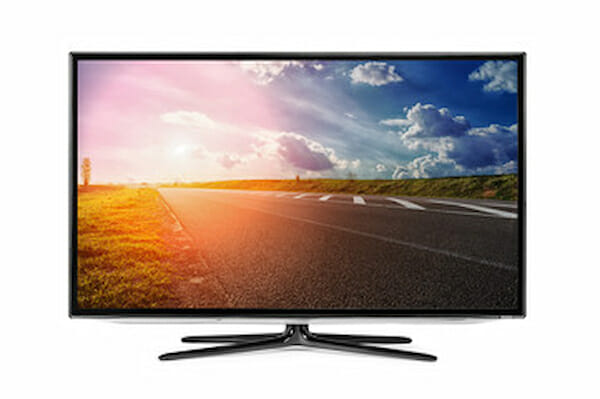Table of Contents
Your tv, or display device, is composed of several layers which work together to produce the final picture. The light source in a tv creates light sent through color filters and pixel microdiodes, each having the colored subpixels needed to make a complete picture. Many different technologies can be used to build the subpixels in this process. Two of these are LED and QLED.
Key Takeaways
- QLED is an improvement of LED technology. QLED TVs have better color accuracy, contrast, and brightness, resulting in altogether better picture quality.
- QLED TV is often more expensive than LED and consumes more energy.
- LED TVs are made by every major TV manufacturer.
- LED TVs offer a wider viewing angle than QLED TVs.
- QLED TVs are not as well-suited for gaming.
These days it can be complicated to know if the TVs are worth buying. The resolution, refresh rate, contrast ratio are all things that are important when looking for a device to purchase. However, none is more discussed or misunderstood than LED vs QLED.
LED vs QLED: What Are They?
Firstly it is worth talking about precisely what LED, and QLED means. LED stands for light-emitting diode. It is a type of Microdiode that uses small semiconductor chips to create colored light. It's then overlayed on top of the black and white picture produced by the LED backlight layer. LED has become very popular in recent years due to its low power usage, low price, and ability to create a bright picture quality.
QLED stands for quantum dot light-emitting diode. It's a relatively new technology from Samsung that uses semiconductor material called quantum dots, emitting different colored lights of varying intensity. Traditional LED TVs will typically have one type of LED used in their construction, and a QLED TV use quantum dot technology.

What Are the Differences?
Although QLED and LED TVs are essentially LCD TVs and use the same technology, there are some significant differences between them.
Viewing Angle
LED TVs produce a much wider viewing angle than QLEDs do. Average LED and QLED TV has a viewing angle between 20 and 40 degrees. However, LED TVs have a vast viewing angle, excelling it in environments with lots of competing light sources. QLEDs suffer from the same problem as plasma and OLED TV due to their lower response time, meaning that they can't compete with LED TVs on this front.
Price & Power Consumption
QLED tv displays are much more expensive than traditional LED TVs and use more power. QLEDs consists of 7 different layers compared to the three used in standard LED TVs. More layers mean more opportunities for light loss, resulting in a lower lumen output per watt consumed which is why they are not as bright as LED TVs.
Image Retention
QLED units do not suffer from image retention nearly as much as standard LED TVs. The reason for this is that the light emitted by a QLED is more like to be polarized than other display types, which prevents it from entering and leaving subpixels multiple times (which causes ghosting)
Motion Blur
Due to the slow pixel response time of QLEDs, they are not very good at handling fast-moving images. It's because, under normal circumstances, different subpixels will be lit separately, causing an artifact known as ghosting. If you play lots of video games on your tv, it might be worth looking elsewhere.
Color Gamut and Volume
QLED units have a considerably more excellent range of colors than LED TVs. QLED has a much better volume of colors which means that they can produce more colors overall and with a broader range between different shades of the same color.
Brightness
LED TVs are much more bright than QLEDs. The peak brightness is measured in lumens and LED tv has higher lumens per watt than QLED. It's due to the fact that LEDs are lit on different subpixels separately, which means they don't have to share energy between subpixels.
What Is a Mini LED Tv?
A mini LED TV is a type of LED tv that uses many tiny LEDs to create its light for the display. The benefit of this technology is that it allows the device to produce bright and vivid colors without using much power.
Mini LED TVs, like QLEDs, use quantum dot technology to create their colored subpixels, which means they can also produce intense blacks. The technology is still developing, but it has already stood up to its promise of matching picture quality of OLED TVs while using less power and being even more affordable.
What Is MicroLED?
MicroLED is a type of LED technology that uses many microscopic LEDs to create subpixels. It becomes possible for the device to produce vivid colors without using much power like mini LED TVs can. It also means that MicroLED units can make affluent blacks due to their high brightness levels (higher than OLED TV, actually).
MicroLED is very similar to OLED TVs, but it is even easier for manufacturers to fabricate and produce an ever-increasing amount of companies are turning to MicroLED.
How Can You Tell the Difference Between MicroLED and QLED?
Some manufacturers have produced devices that use LED technology but give them a different name to try and persuade customers that the devices are something they're not. This means that it is nigh on impossible to tell what technology a device is using just by looking at it or reading the product's name.
Black Level & Contrast
Both use the same technology to achieve deep blacks, but QLED is slightly better. It's because it can produce more shades of black due to its more significant number of subpixels (quantum dot technology).
LED backlight is different than QLED backlight in that LED backlights use white LED TVs to provide light for the device, whereas QLED uses blue LED TVs to create all of its colored subpixels.

QLEDs can produce more colors than LED TVs, which means they have a much more excellent range between different shades of color.
Moreover, MicroLED can achieve even black levels than QLED, but this will only become apparent when the technology has had more time to develop.
Input Lag
QLED TVs have input lags that are much higher than MicroLED TVs due to their slower response times. If you are looking for a gaming TV, it would be worth looking elsewhere.
Pros of QLED TVs
Cons of QLED TVs
Pros of LED TVs
Cons of LED TVs
QLEDs vs. OLED TVs: What’s the Difference Anyway?
Both of these technologies are good at producing deep blacks, so they are often compared. When comparing QLED to OLED TVs, it can be difficult to tell what you're looking at without viewing the two units side-by-side, but this makes a big difference.
OLED TVs are known for excellent picture quality and for producing vibrant colors that have an excellent range. QLED, on the other hand, can produce more colors overall because it has a broader range of subpixels.
Their picture quality is unmatchable and their prices have comparatively come down in the last few years. If budget isn't a constraint and absolute perfect picture quality is a priority, OLED TVs are the ultimate option.
Most experts believe that OLED TVs are better at producing blacks, but others think that QLED performs slightly better in this regard. The difference comes down to the number of subpixels used to create color for each unit.
TL;DR
QLED and MicroLED are similar technologies that produce deep blacks and vivid colors. The difference between the two is hard to spot for most people, but it is becoming increasingly apparent which one will come out on top as time goes on. QLED uses a broader range of subpixels and produces slightly better colors overall.

How to Clean LED and QLED TVs?
You can clean an LEDs and QLEDs with just a microfiber cloth. Although it sounds simple, using a soft, dry cloth prevents scratching on the screen. Use of window cleaners should be avoided, as harsh chemical ingredients may damage TV panels.
In all cases, product experts recommend turning off your TV (or even unplugging it) prior to wiping the screen with the soft cloth, as a dark screen will make it easier to notice any smudges or dirt. Not only that but turning the TV off will also give the set a chance to cool down.

What To Look For When Buying a New TV?
Before deciding on a new TV, there are seven key factors to consider when shopping:
- Cost
- Size
- Resolution
- HDR
- Refresh rates
- Integrations
- Apps
However, there's no real "best" universal solution to this dillema because it's all about what you want and your personal preferences and needs.
Final Word on LED vs. QLED
There is no clear winner in LED vs. QLED; all significant factors come down to personal preference. If you are looking for a wide viewing angle, low ghosting, and good blacks, go for an LED unit. HDR, refresh rate, and backlighting are also essential factors that you should consider.
Whichever unit you buy, make sure that it has a wide color gamut because it will allow it to display more colors than the standard sRGB gamut. You should also look at whether or not your TV can produce HDR, even if you don't plan on using it in the next few years when it becomes more widespread because it is brighter and contains a wider range of colors than non-HDR units.
FAQ
Q. Is QLED better than LED?
A. QLED is slightly better than LED in some areas, but they are essentially LCD TVs that have similar technologies producing deep blacks and rich colors.
Q. Is MicroLED the same as QLED?
A. Not entirely, but they are very similar, and MicroLED devices use quantum dots to create color, so they can be expected to perform similarly.
Q. What is the difference between LED and OLED TVs?
A. OLED TVs use organic pixels to create color, while LED uses tiny dots of LEDs. It means that QLED can produce a wider range of colors because it has more subpixels at its disposal for each pixel, whereas OLED TVs only need one technology for creating light and color.
Q. Is QLED better than LED 4K?
A. No, they are very similar technologies that produce deep blacks and vivid colors. QLED may be slightly better in some areas, but this is hard to spot for most people.
Q. Which is better, LED or OLED TV or QLED?
A. OLED TVs are better at producing rich blacks because it uses organic pixels to create them, whereas QLED needs more subpixels. QLEDs are slightly better at creating colors, but this isn't noticeable for most people.
It is also worth noting that LED 4K is very similar to QLED, except it does not use quantum dots to create colors, but OLED TVs are even better for this area.
Q. What is the difference between LED and MicroLED?
A. Not much at all since they are so similar, though MicroLED can create more colors due to having a more comprehensive range of subpixels available. QLED is slightly better in this regard, but it's almost impossible for the average person to spot the difference without viewing both technologies together side-by-side.

